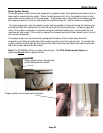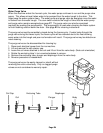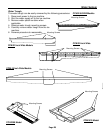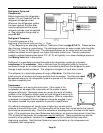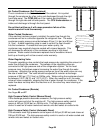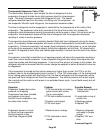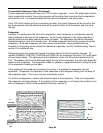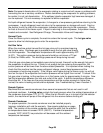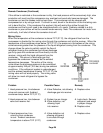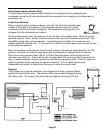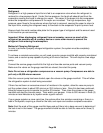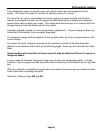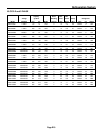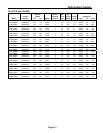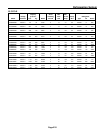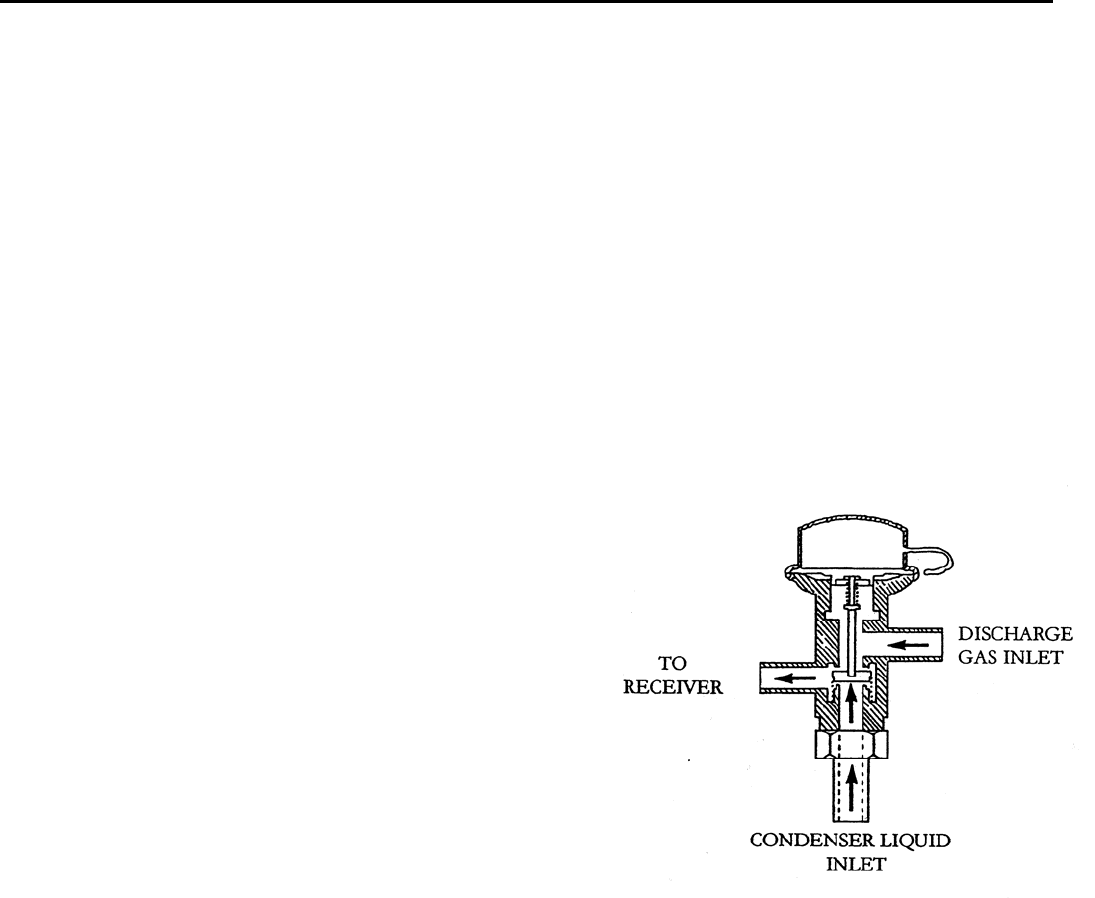
Refrigeration System
Page E6
Remote Condenser (Continued)
If the airflow is restricted or the condenser is dirty, the head pressure will be excessively high, slow
production will result and the compressor may overheat and eventually become damaged. The
condenser coil and fan blades must be kept clean. The condenser can be cleaned with
compressed air or by using a brush. If a brush is used, brush in the direction of the fins taking care
not to bend the fins. If the condenser fins are bent, this will restrict the airflow through the
condenser and the fins will need to be straightened with a fin comb. Problems related to a dirty
condenser or poor airflow will not be covered under warranty. Note: The condenser fan motor runs
continually, it will shut off when the icemaker shuts off.
Mixing Valve
When the temperature at the condenser is above 70°F (21°C), the refrigerant flow from the
compressor is directed by the mixing valve through the condenser and into the receiver. When the
temperature at the condenser drops below 70°F (21°C), the pressure in the bellows of the mixing
valve becomes greater than the pressure of the liquid refrigerant coming from the condenser. This
change allows the valve to partially restrict the flow of
refrigerant leaving the condenser and allows discharge
gas to by-pass the condenser and flow directly into the
receiver, mixing with the liquid refrigerant from the
condenser. The amount of discharge gas that
bypasses the condenser increases as the ambient
temperature decreases. This action of the mixing
valve allows the discharge pressure to be maintained
at approximately 240 psi (16.5 bar) during low ambient
conditions. If the refrigerant system is undercharged
and the ambient temperature is below 70°F (21°C), the
mixing valve will not work properly. The mixing valve
will allow too much refrigerant to bypass the
condenser.
Problem Possible Cause Remedy
1 Head pressure low, Line between A. Valve Defective, not allowing A. Replace valve
valve and receiver cold. Ambient discharge gas into receiver
condenser temp. below 70°F (21°C)
2 Head pressure low, Line between A. System low on charge. A. Leak check. Recover
valve and receiver hot. B. Valve defective, not refrigerant and weigh
allowing liquid in proper charge.
into receiver. B. Replace valve
3. Head pressure low, Line A. Valve defective not A. Replace valve.
returning from condenser allowing refrigerant
is cool. Ambient condenser to circulate through
temperature is above 70°F (21°C) condenser.



